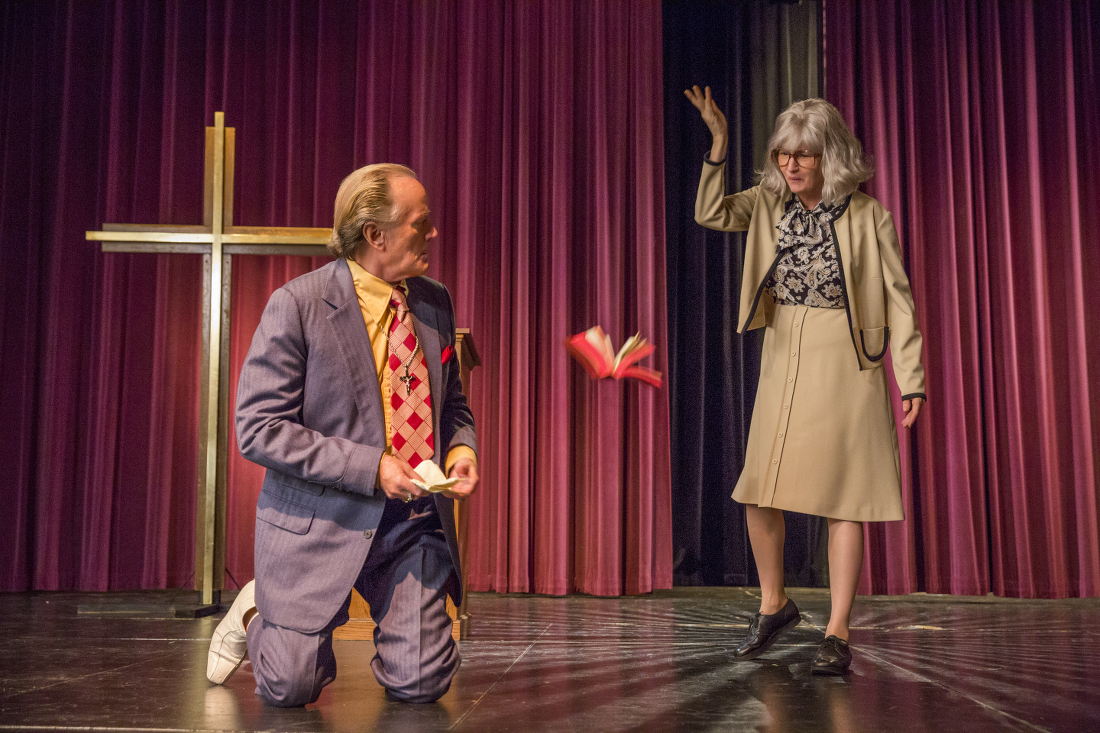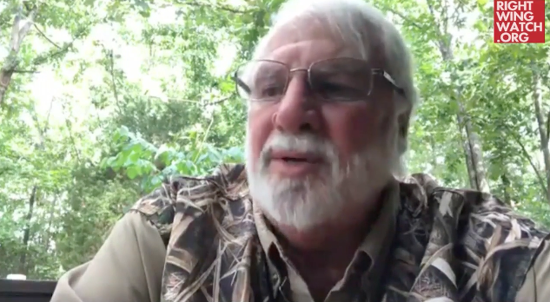This is an article by Pamela Whissel. It appears in the current issue of American Atheist magazine, which is sold at Barnes & Noble, Book World, and Books-A-Million bookstores in the United States and at Chapters/Indigo bookstores in Canada. To find a store near you or to subscribe, go to atheists.org/magazine.
…

“Well-behaved women seldom make history” is a phrase from an article written by Laurel Thatcher Ulrich for the academic journal American Quarterly in 1976. Sentences from scholarly research seldom become bumper stickers and t-shirts, but to Ulrich’s surprise, this one did with no action on her part at all. In 2007, she published a book with that title. In it, she talks about the experience of having her words take on a life of their own and then goes on to write about three women from three different centuries who challenged the way history was written.
“The most hated woman in America” is another phrase that took on a life of its own. It inspired no one to run out and print a thousand bumper stickers, but the woman who coined it, Madalyn Murray O’Hair, used it proudly to describe herself.
By many accounts, Madalyn was not a well-behaved woman. By all accounts, she changed history when she challenged the recitation of Christian prayers in public schools. She thought it was unconstitutional, and the United States Supreme Court agreed with her in their 1963 ruling. She was already a seasoned activist and a skilled orator by then. She was also a single mother of two sons by two different men. Back then, a woman with her foot in just one of any of those camps didn’t have a hope in hell of being called well-behaved. It’s much different for women today, and a lot of credit goes to Madalyn, whose life story is a series of fascinating, exciting, inspiring, and harrowing events.
Three authors have published biographies of her, but there has never been a feature-length biopic about her until this year, when Netflix released The Most Hated Woman in America, directed by Tommy O’Haver, who co-wrote the screenplay with Irene Turner. O’Haver also directed Ella Enchanted and An American Crime. The two were approached by actress Elizabeth Banks, who starred in The Lego Movie and The Hunger Games. Banks and her husband, Max Handelman, have produced several films, including the Pitch Perfect franchise. Impressed with An American Crime (which O’Haver and Turner also co-wrote), Banks asked them to write a screenplay about Madalyn Murray O’Hair.
“I didn’t know about Madalyn at all when the project was first proposed to us,” said O’Haver. “We dove into the research, and we couldn’t believe that not only did we not know this story, but the story had never really been told in full on film yet. So we were all in.”
That meeting was eight years ago. “It’s not easy to get funding for a movie about a murdered Atheist,” he said. “At first, we looked for independent financing, but it’s not something that everybody wants to shell out a bunch of money for.”
But eight years gave the writers plenty of time to get to know their subject. “Our research was extensive, with trips to Austin and San Antonio and years of scouring articles and Madalyn’s writings. It’s crucial to remember this isn’t a documentary; we’re using the story as a backdrop to create a character sketch,” said O’Haver. “She was outrageous and outspoken and just so passionate,” he continued. “I’m fascinated with human beings and what makes them tick, and I’ve got to say that I fell in love with her because I thought she was such an amazing person.”
Actress Melissa Leo came on board three years into the project to play Madalyn. “I had seen her in The Fighter,” said O’Haver, referring to the role that won Leo an Oscar for Best Supporting Actress, “and as I watched that film I knew I had found my Madalyn.”
Fast forward to 2015 when Banks and Handelman approached Netflix, which had announced its plans to fund ten low-budget films. Netflix gave The Most Hated Woman in America the green light — and just two million dollars.
Before they could begin production, O’Haver and Turner had to make difficult decisions about where to make substantial cuts. Two million dollars for a film does not go very far, let alone in Los Angeles, where the biggest cost on a film is labor. So they had to figure out how many days they could afford to hire a complete film crew. It turned out to be only eighteen. Their schedule was so tight that they had no time to rehearse before shooting.
“It was the hardest movie I’ve ever made,” said O’Haver. “For a movie of this scope, eighteen days is just crazy. The story takes place all over the country and spans five decades. There were some days when Melissa was playing Madalyn at three different ages. It was insane.”
All filmmakers take some creative liberties to keep a story moving, but this team had to condense several scenes and remove others altogether from their script in order to stick to the budget and schedule. Choosing which scenes to leave out was not easy.
“Making a female biopic with true-crime elements set across several years, and with a very small budget, required the filmmakers to be flexible and creative in terms of which pieces of the story to tell,” said Banks.
The short scene with Madalyn showing employee David Waters the “unofficial ledger” of donations is a good example of how the filmmakers had to let go of their original vision. The plan was to shoot several scenes around the true series of events between 1993 and 1995 when Waters had embezzled from American Atheists by draining the bank accounts while Madalyn was out of town attending a trial. All of those details were condensed into that one scene.
“Totally made up,” is what O’Haver said about the unofficial ledger. They inserted the prop into the story to represent Waters’ intimate knowledge of American Atheists’ finances, as well as the trust she had placed in him. It was also a nod to the run-ins she had with the IRS, although no wrongdoing was ever proven.
At another point in the film, Madalyn throws Waters out of her house after angrily revealing his criminal history to her guests at a holiday party. This short scene represents the series of events that began when Madalyn filed charges against Waters for the embezzlement. The court gave him a slap on the wrist by imposing no jail time and merely ordered him to pay back the money—without interest.
In an eight-page missive for the July 1995 American Atheists Newsletter, Madalyn detailed all of these events. She included Waters’ criminal history, which she discovered while looking into his background after she filed the charges. Waters was a convicted murderer, had spent time in prison for forgery, and was also convicted of battery for severely beating his own mother. Revealing Waters’ criminal history at a holiday gathering was done for storytelling purposes; a fight at a party has more dramatic appeal than a woman sitting at a typewriter.
The timeline of Madalyn’s disappearance was also significantly condensed. In the film, the local paper reports on her disappearance right away, but in reality, the first news story didn’t appear until the one-year anniversary of the day she went missing. Another example of the need to compress the subject matter is the composite character Roy Collier, the office manager. He represents two people who worked for American Atheists at the time of the disappearance.
Composite characters are common in films and in books as well. They allow a writer to consolidate details which would otherwise distract from the story which, in this film, is about much more than a preeminent civil rights champion or her kidnapping and gruesome murder. It’s about a woman who was, as O’Haver described her, complex.
“The world is not black and white,” he said. “There are forces that want you to believe it is, but it’s far more complicated than that, and Madalyn is the perfect example. Not only did she fight against those forces that would want to make the world black and white, but she herself was also not black and white. The world is a complex place, and people are complex. The more we ignore our own complexity, the more we lose touch with our humanity.”
…
Pamela Whissel is editor-in-chief of American Atheist magazine.
Filmmaker Tommy O’Haver is the director of The Most Hated Woman in America, a Netflix original feature film about the life and death of American Atheists’ founder Madalyn Murray O’Hair. Oscar-winning actress Melissa Leo plays Madalyn.
There will be a screening of the film followed by a discussion with O’Haver at this year’s American Atheists National Convention and Eclipse Party in Charleston, South Carolina, August 19-21.




It’s Moving Day for the Friendly ..."
It’s Moving Day for the Friendly ..."
It’s Moving Day for the Friendly ..."
It’s Moving Day for the Friendly ..."